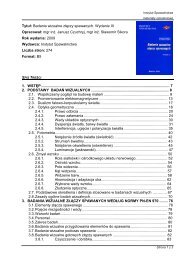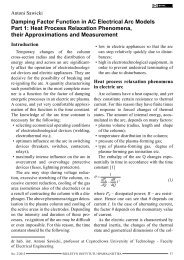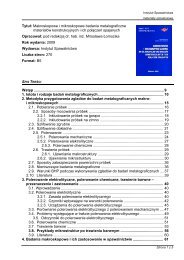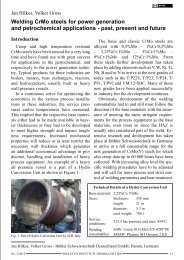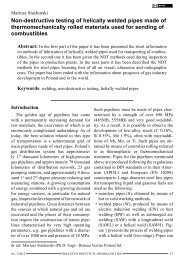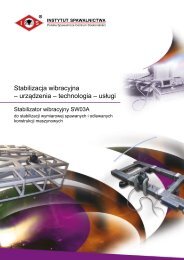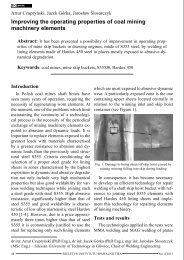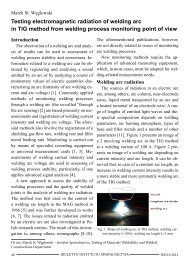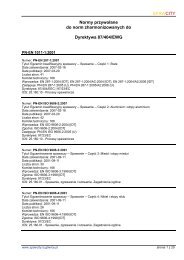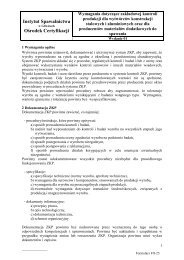Biuletyn Instytutu Spawalnictwa No. 01/2012
Biuletyn Instytutu Spawalnictwa No. 01/2012
Biuletyn Instytutu Spawalnictwa No. 01/2012
You also want an ePaper? Increase the reach of your titles
YUMPU automatically turns print PDFs into web optimized ePapers that Google loves.
L=1 mm, I=25 A L=1 mm, I=50 A L=1 mm, I=75 A<br />
L=1 mm, I=100 A<br />
L=2 mm, I=25 A L=2 mm, I=50 A L=2 mm, I=75 A<br />
L=2 mm, I=100 A<br />
L=3 mm, I=25 A L=3 mm, I=50 A L=3 mm, I=75 A<br />
L=3 mm, I=100 A<br />
L=4 mm, I=25 A L=4 mm, I=50 A L=4 mm, I=75 A<br />
L=4 mm, I=100 A<br />
L=5 mm, I=25 A L=5 mm, I=50 A L=5 mm, I=75 A<br />
L=5 mm, I=100 A<br />
Fig. 2. Image of welding arc in TIG method for arc length in range from 1 to 5-mm and current intensity<br />
from 25 to 100 A; shielding gas: argon<br />
Energy emitted in an arc column is mainly<br />
scattered by conduction and convection.<br />
Emission of electromagnetic radiation constitutes<br />
10÷15% of energy supplied to an arc<br />
[11]. Heat radiation, the source of which is a<br />
body emitting high temperature, is characterised<br />
by a continuous radiation spectrum. The<br />
source of a continuous spectrum in the area<br />
of a welding arc is mainly a liquid weld pool<br />
[12]. The characteristic radiation of atoms and<br />
ions in an arc is discrete. This type of radiation<br />
is analysed in reference publications as plasma<br />
radiation.<br />
Plasma of a temperature contained in a range<br />
between several eV and a few dozen keV<br />
(in energy scale 1 eV = 11600 K) emits infrared<br />
radiation, visible radiation, ultraviolet<br />
radiation and X-ray radiation, which, due to<br />
the mechanism of emission can be divided into<br />
three basic types [14]:<br />
NR <strong>01</strong>/2<strong>01</strong>2<br />
BIULETYN INSTYTUTU SPAWALNICTWA<br />
41






